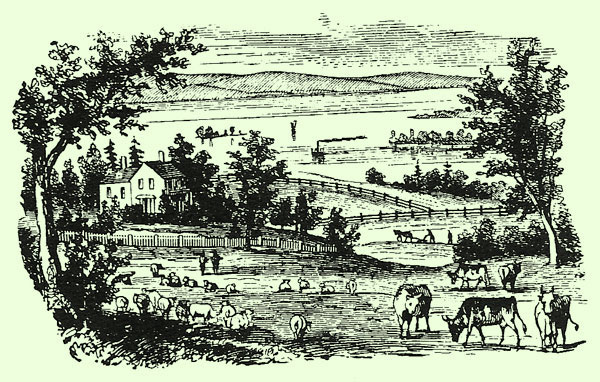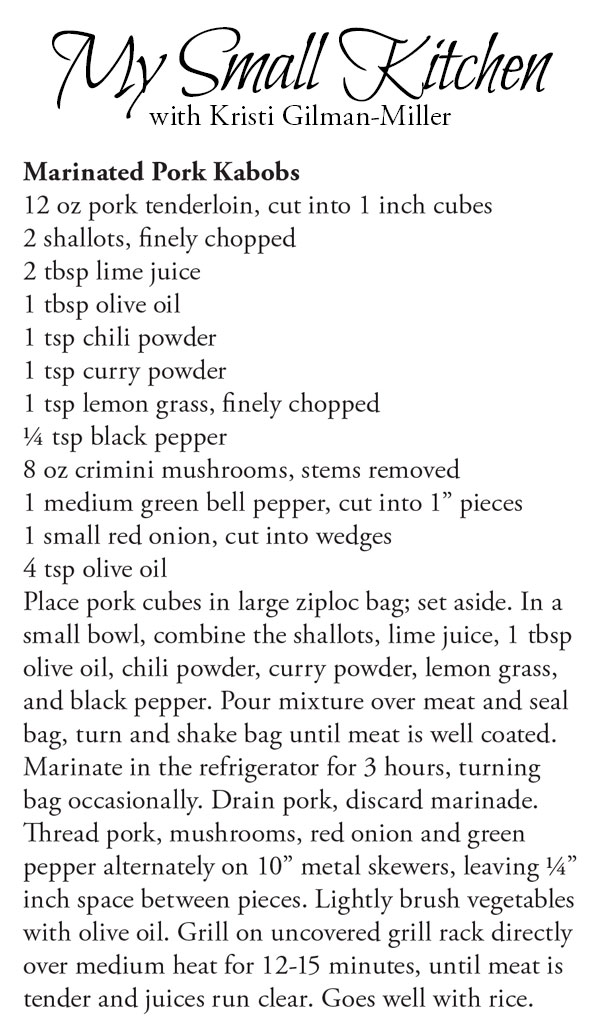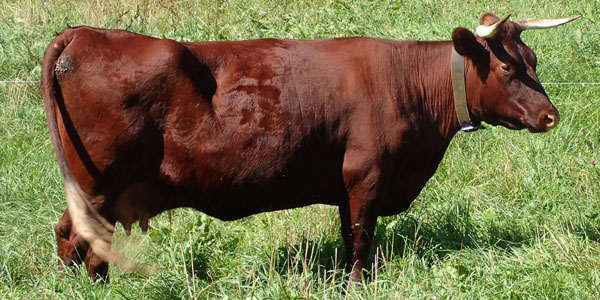
Home & Shop Companion #0108

Rural Ramblings – Spring 1979
Ralph C. Miller
“Where are you going my pretty maid?”
“I’m going a-milking Sir,” she said.
“What is your fortune, my pretty maid?”
“My face is my fortune Sir,” she said.
“Then I can’t marry you, my pretty maid.”
“Nobody asked you Sir,” she said.
– Old Nursery Rhyme
At the risk of offending some of the more militant exponents of feminism I should like to pause a moment to mourn the passing of the Milkmaid. Traditionally apple-cheeked and more than a bit buxom, she represented all that was wholesome in buccolic charm. By way of contrast the rubber, plastic and stainless of the modern milking machine seems to lack a certain charisma.
And I’m not sure that the alternative careers for the unskilled country lass were that much of an improvement either. After a long day on the assembly line or waiting tables in some dingy diner perhaps she may have recalled with a note of regret the time when she could lean her head into the warm flank of a cow.
Ah well, progress. A couple of milkmaid recollections…
Not too long ago a young country girl of our acquaintance came off her father’s dairy farm still looking for more of the same. Father’s health had dictated closing down the dairy and she was available. Her frank assessment of her best chance at that moment was to locate some young dairyman, marry him and so acquire husband and design for living in one operation.
She grew up with it; along with the country charm she possessed a sturdy ability. She could throw hay bales on to the truck at fifteen. Some young farmer should have had a golden opportunity but – (let’s hear the chorus) – Alas! When no offers presented she flew off to visit a cousin in Hawaii and we may suppose succumbed to the blandishments of the lotus eaters. Too bad – if I had been 40 years younger!
Not that there are no dairies in the Islands. In the grim days shortly after Pearl Harbor some of our training marches led us through the farm belonging to the Dole Pineapple Company. We passed right by the barnyard where the dairy cattle were kept and noted how well-fed and contented they looked. Following the discovery that they were fed on peels and trimmings of the pineapple our noses soon told us that the vats of residue ripening in the sun were fermenting.
‘Pineapple swipes’ it was known as; small wonder the cows seemed so contented as they staggered back for another nip. Not exactly drunk; just a pleasant buzz. They say it doesn’t show up in the milk. A pity – Grade AA Plus at least.
The other milkmaid I referred to takes us all the way across the water in the other direction. A dozen years back we were in the Netherlands and made a trip from Amsterdam up to Volendam on the Zuyder Zee. On the way back we stopped in a tiny farm village, called Broek in Vaterland, to have a look at a typical Dutch farm operation. We crossed a private bridge over the ‘broek’ to a single large brick building.
Although we did not enter the front the dairymaid informed us that there the whole family lived quite comfortably. Down the side of the structure she indicated the central portion perhaps 25 feet by the whole width of the building was stacked tight with the next Winter’s supply of hay. We entered near the back into a stable for about 20 cows. It was early Summer and the cows were on pasture until the coming Winter. The stable was spotless white. Through two consecutive doors and past the hay door we came to the place where the family processed the milk into cheese.That area also was so clean you felt you should remove your shoes. Even to an old Wisconsin boy the cheese was first quality.
Maybe, as I did, you read stories of such establishments in Europe in times past and dismissed them as queer foreign notions. But there it was – dwelling, hay, cattle and cheese factory, the entire process under one roof. In these energy conscious days that begins to make sense again. Sanitation has to be considered but their obvious attention to cleanliness probably made that academic.
The Netherlands are pretty far North; 50 degrees plus, while the U.S.-Canada border is only the 49th parallel. Although I have not been there in Winter I am sure it is bitter cold. Anything that convenient for men and animals must be a big help. Our milkmaid certainly thought so.
Winter on the farm – for those who are reading this while snow drifts deep outside, any prolonged discussion of the meaning of those words is superfluous to say the least. However, for the benefit of newcomers and those whose climate knows no season let’s take a stroll through the snow.
Although we don’t usually get much here we have had some lately. There are joys in winter. Sitting snug and warm in front of the fireplace, everything buttoned up tight, a pot of Mama’s delicious beans bubbling on the back of the old wood cook stove – I’d not change with Kings, not at the moment.
Of course, the key phrase is ‘not at the moment.’ Doing chores after dark and again before daylight with the snow blowing and the thermometer well below zero it isn’t always easy to remember those joys. I have put in my time at that too.
If anyone thinks there isn’t much to be done on a farm in Winter, they ‘haven’t been there.’ Keeping stock alive and healthy, playing midwife at midnight in a drafty barn, shovelling snow out of the way so you can shovel manure to spread on the fields – if there be any free time there is gear and equipment to repair or mend.
I can remember as a boy what a chore it was just to keep the livestock watered. As long as I could I would keep a hole open in the pond. After the ice got to be more than a foot thick that got to be harder and harder. Soon it was time to use the hand pump – after you got it thawed out.
And then there is the endless feeding. Tough enough when all your animals are housed or yarded. Even more difficult when they must be fed and watered on pasture or open range. Getting hay and grain out can be a real problem when snow and drifts are deep. That’s another time when a good team of horses is worth more than a gas pump. A lot of farmers and ranchers have gone back to that.
Two years ago we spent most of January? and February in and around Indianapolis. What I remember best of the countryside was a pair of fine looking round barns; that and the deep snow. I understand last year was equally bad or worse but ’77 was quote “the worst Winter since weather records were kept.”
In the middle of that I had to make a trip to a theatre on the South side of the city. Cars frozen up, cars in ditches and snowdrifts all the way down. When I pulled back on the Freeway ramp just a block from the Shopping Center there was a fine looking farm almost surrounded by the city, and in the barnyard the farmer bustled around a team of big black horses hitched to a sled. I expect that many driving up and down that stretch of road laughed at the ‘horse and buggy farmer’ but at that time in the stormy Winter it was easy to see who enjoyed the last laugh.
To get back to Winter feeding, in the ‘Big Sky Country’ a couple of years ago I was cheered to see all that loose hay being made. All of our hay was ‘loose’ when I was a boy. The difference being that in Montana as in much of the range country, hay is stacked right in the field and fed there.
There is an awful lot to be said for that practice aside from the obvious convenience. Medium stacks spread widely across fields help keep cattle from bunching, provide some windbreak and return the top dressing right where it is needed. (One-crop Agriculture thinks this is nonsense – plant, harvest and be off to Florida.) The cattle business is no sinecure but in spite of hard work and grumbling most cattlemen wouldn’t do anything else.
Now loose hay today isn’t necessarily the same as I recall. There are even mechanical stackers that pick it up, press it into loaf shaped (or round) stacks complete with thatch and I suppose a built-in plastic cap. Along with other vanishing species (the Milkmaid) list the true professional loader or stacker.
There’s an art to building a proper stack that will withstand wind, shed water and won’t collapse when cattle feed around the base. I don’t claim to know all about that; most of our hay went in the barn, but loading the hayrack on the farm wagon was something I had to learn well.
My Grandfather taught me and he was very special about it. Hay went in the barn with the big hayfork on carriage and track and the load had to be built just right so that each huge forkful lifted off in sequence. That may not seem like so much but recollect that the load had to stay balanced at all times both in the field and at the barn. The rack and load were much larger than the wagon beneath so two or three big jags from one side or end and you would find yourself and the load bottomside up. And the order coming off had to reverse that of loading.
I learned the lesson well enough that a few years later when working with a crew on a big farm I was able to RELOAD one someone else had lost. The showoff kid had to build the load so much wider that I was able to get almost twice as much on – then I prayed silently all the way to the barn that the hay and I would stay right side up. Bless Grandpa.
Most farmers today though depend on the baler. Nothing wrong with that – I’m not against progress where it is justified. Bales are easy to handle, easy to store, keep well and packed bales with less air are less prone to spontaneous combustion. Hay bales and horses are not incompatible. Horses can mow, rake and for some people even pull a mechanical baler. We don’t condemn tractors (not smaller, older tractors, anyway). Live and let live – the horse will never replace the tractor again – it shouldn’t. All we advocate is that horses still have their place with those who can use them.
Neither are hay bales all that much a symbol of modern technology. There have been improvements in method, but it is a matter of historical record that when General Artemis Ward put his thousands of militiamen to building barricades around Boston after the Battle of Lexington and Concord, some of them were built with hay bales. Hand baled with a screw press. No tractors handy, I guess.
We’ve had more than our usual share of cold and ice so far this year; the pond hasn’t thawed completely in the last three weeks. Our Winters are supposed to bring mostly rain, not snow and ice storms. Our daughter and her husband can look out for the home place, two of our sons are on their farms with all the livestock so there is nothing to keep us here. We need to get on the road again.
The fact that we’re heading South is only coincidence; our last two trips have been across the northern and middle States. If we get to Florida and beyond put it down to research. We’re not deserters running from the Winter, just RURAL RAMBLERS seeking copy.






